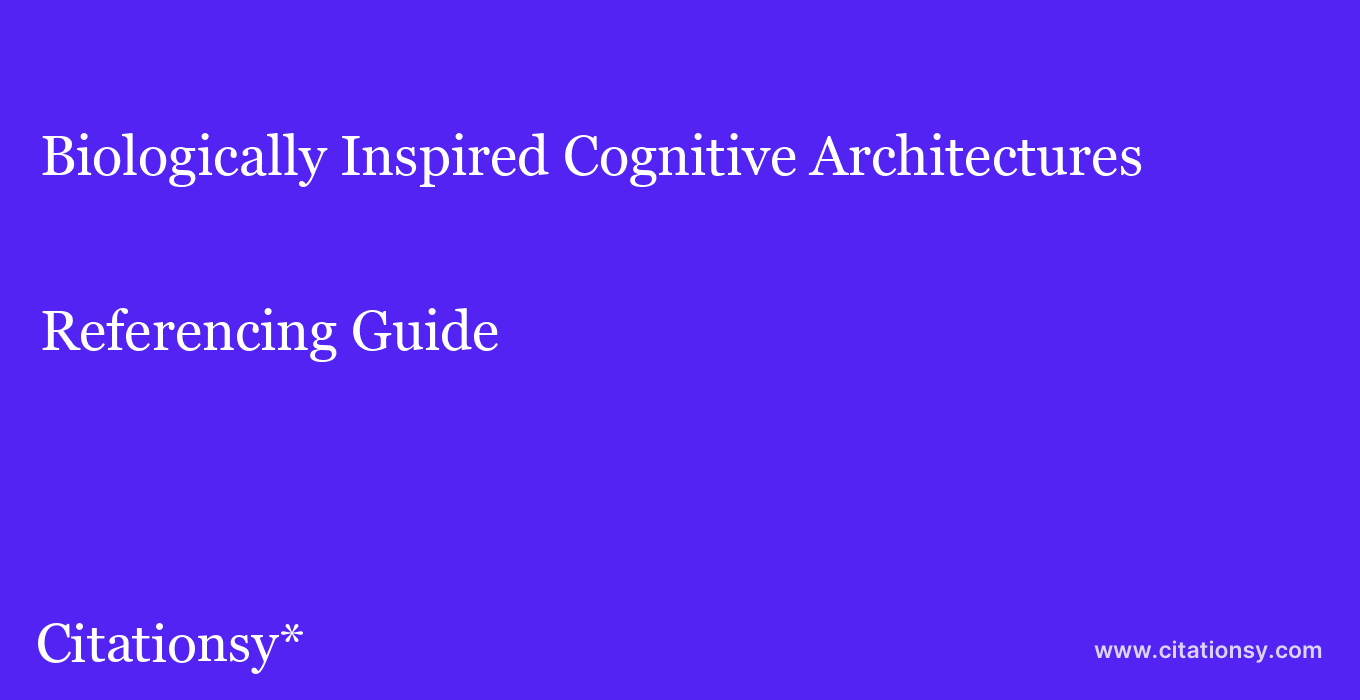Biologically Inspired Cognitive Architectures Referencing Guide
(updated Jul 2024)
Last updated:
How to do citations in Biologically Inspired Cognitive Architectures style?
This is the Citationsy guide to Biologically Inspired Cognitive Architectures citations, reference lists, in-text citations, and bibliographies.
Automate citations and referencing with our tool, Citationsy. It’s free to try and over 400 000 students and researchers already use it.
This is the Citationsy guide to Biologically Inspired Cognitive Architectures citations, reference lists, in-text citations, and bibliographies.
The complete, comprehensive guide shows you how easy citing any source can be. Referencing books, youtube videos, websites, articles, journals, podcasts, images, videos, or music in Biologically Inspired Cognitive Architectures.
Click here to give it a try.

How do you cite a book in the Biologically Inspired Cognitive Architectures referencing style? (2024 Guide)
A book citation in Biologically Inspired Cognitive Architectures always includes the author name(s), the publication year, the book title, and the publisher. Here’s an exampleHere’s an example book citation in Biologically Inspired Cognitive Architectures using placeholders:
Last Name, F. N. (2000). Title (E. F. N. Editor Last Name, Ed.; Edition). Publisher.
Biologically Inspired Cognitive Architectures citation:
Angelou, M. (1969). I Know Why the Caged Bird Sings (1st ed.). Random House.
Automate citations and referencing in Biologically Inspired Cognitive Architectures with our tool, Citationsy.
It’s free to try and over 400 000 students and researchers already use it.
Click here sign up
How to reference a journal article in the Biologically Inspired Cognitive Architectures citation style?
How do you cite scientific papers in Biologically Inspired Cognitive Architectures format?
The basic information included in your citation will be the same across all styles. However, the format in which that information is presented is somewhat different depending on style you need. To cite a paper in Biologically Inspired Cognitive Architectures, follow this exampleHere’s a Biologically Inspired Cognitive Architectures journal citation example using placeholders:
Author1 LastnameA. F., & Author3 LastnameA. F. (2000). Title. Container, Volume(Issue), pages Used. https://doi.org/DOI
 Sign in with Apple
Sign in with Apple account
account